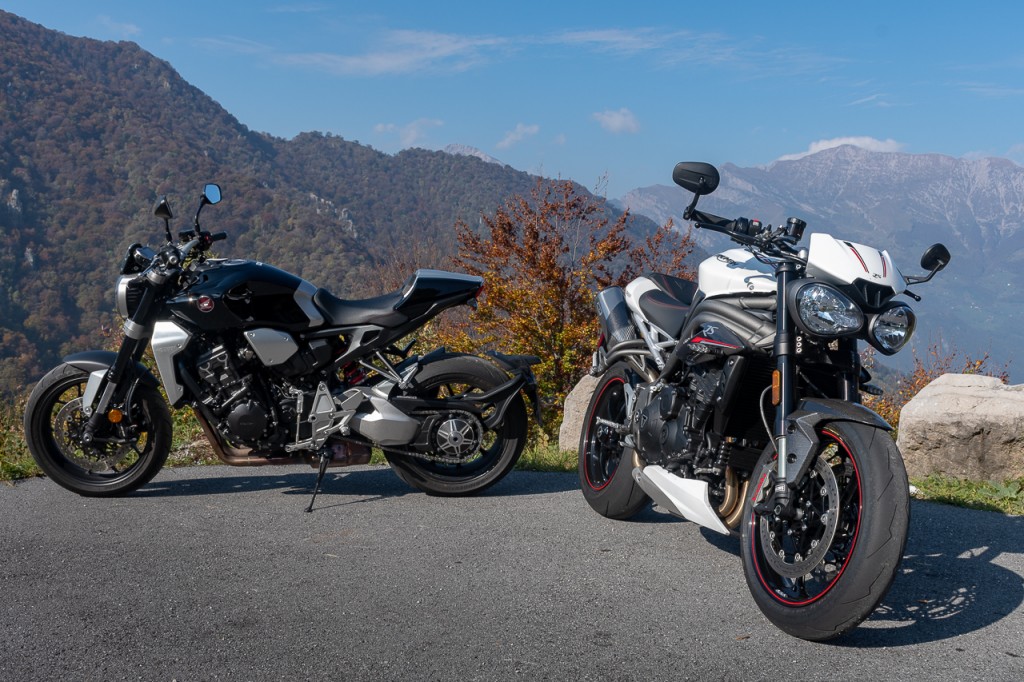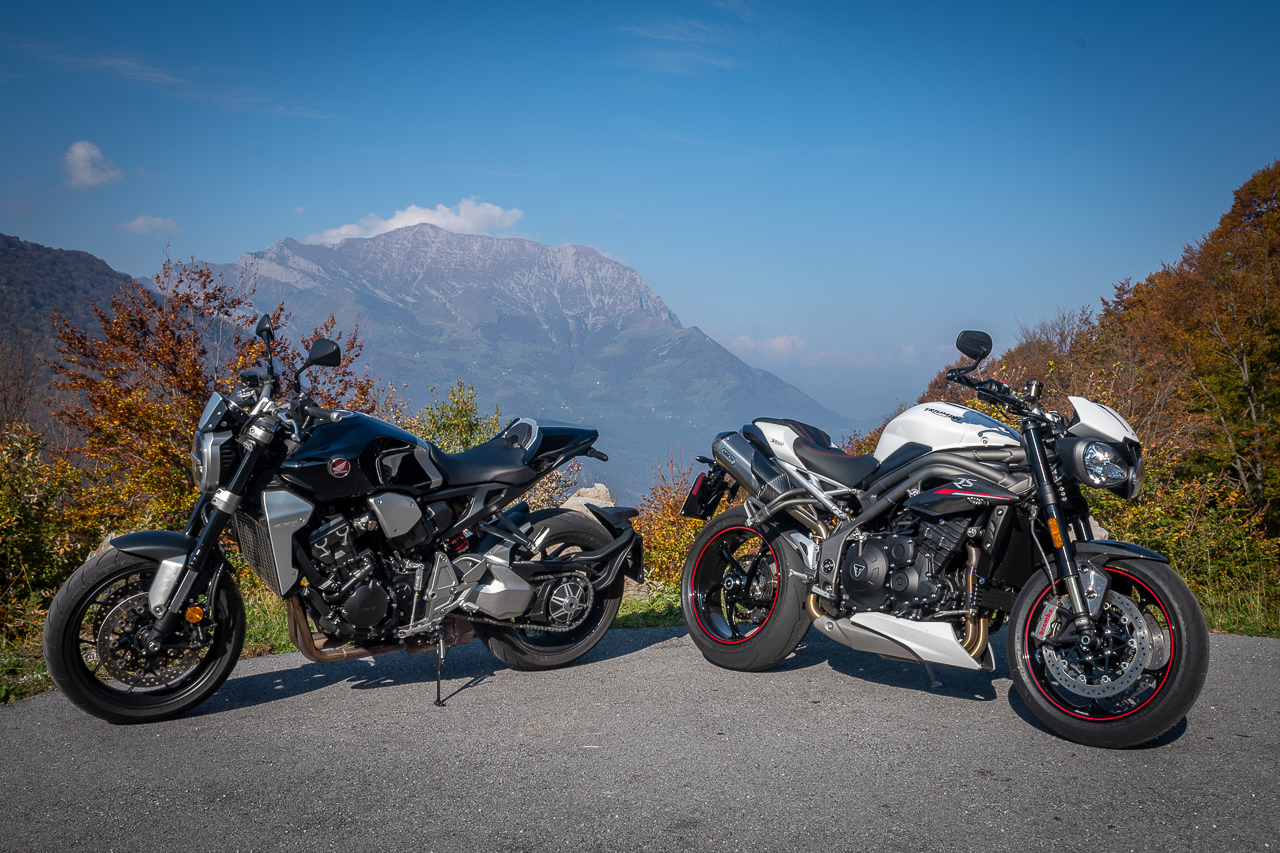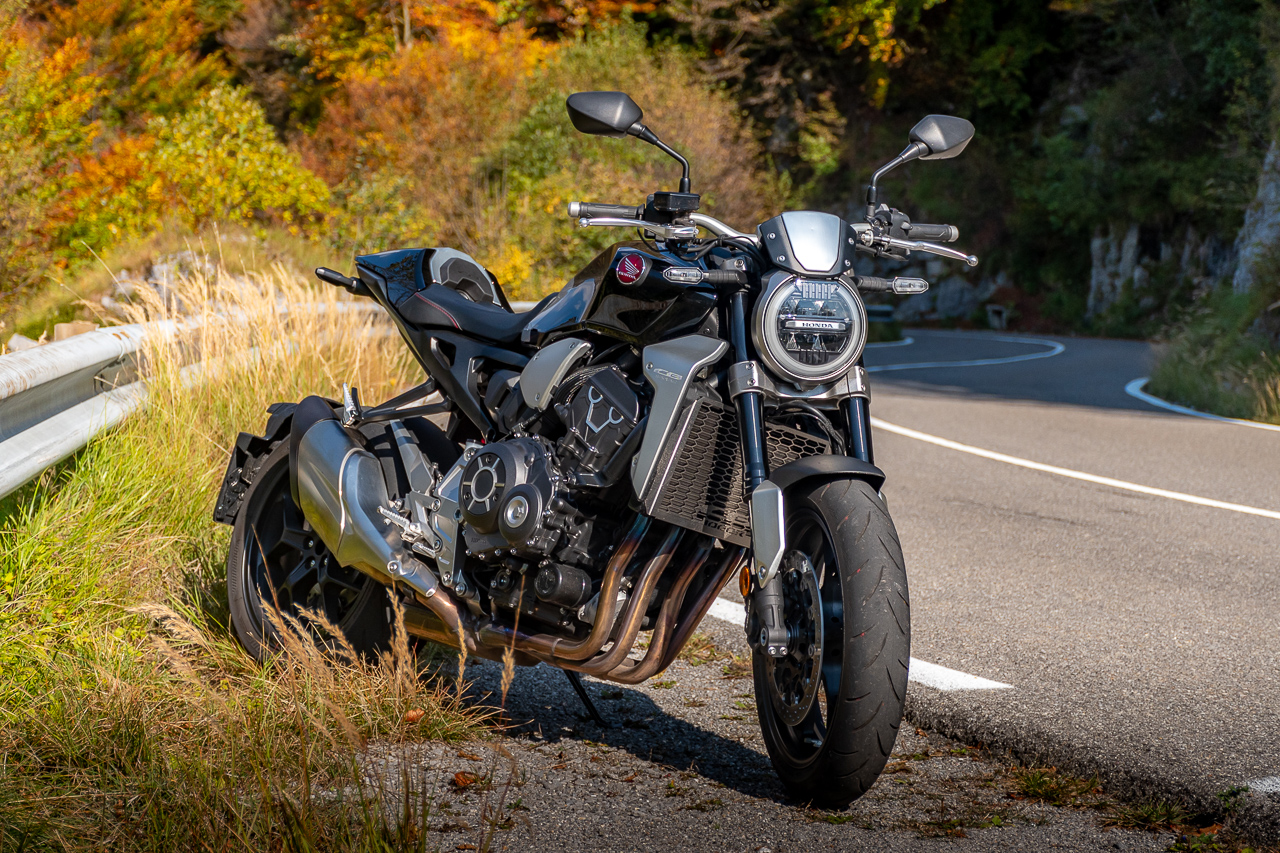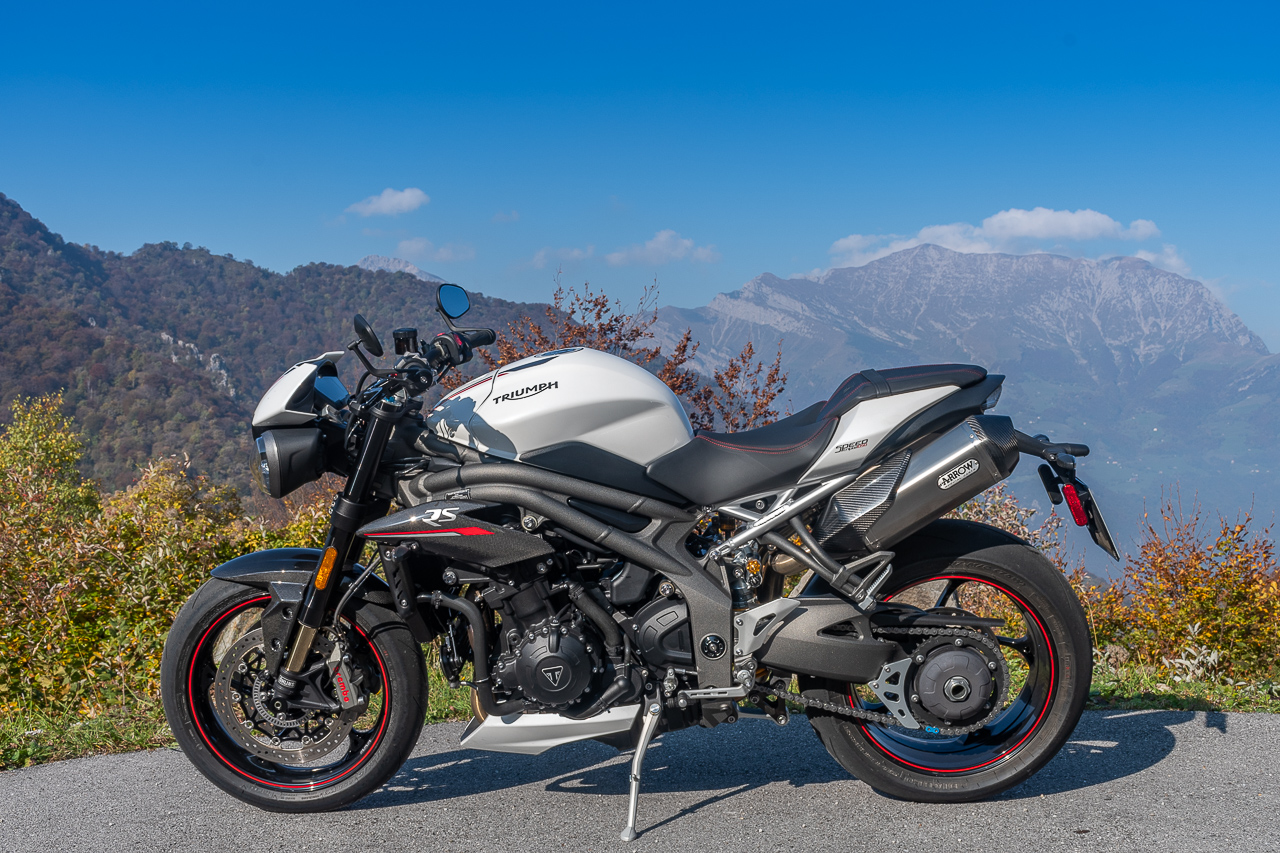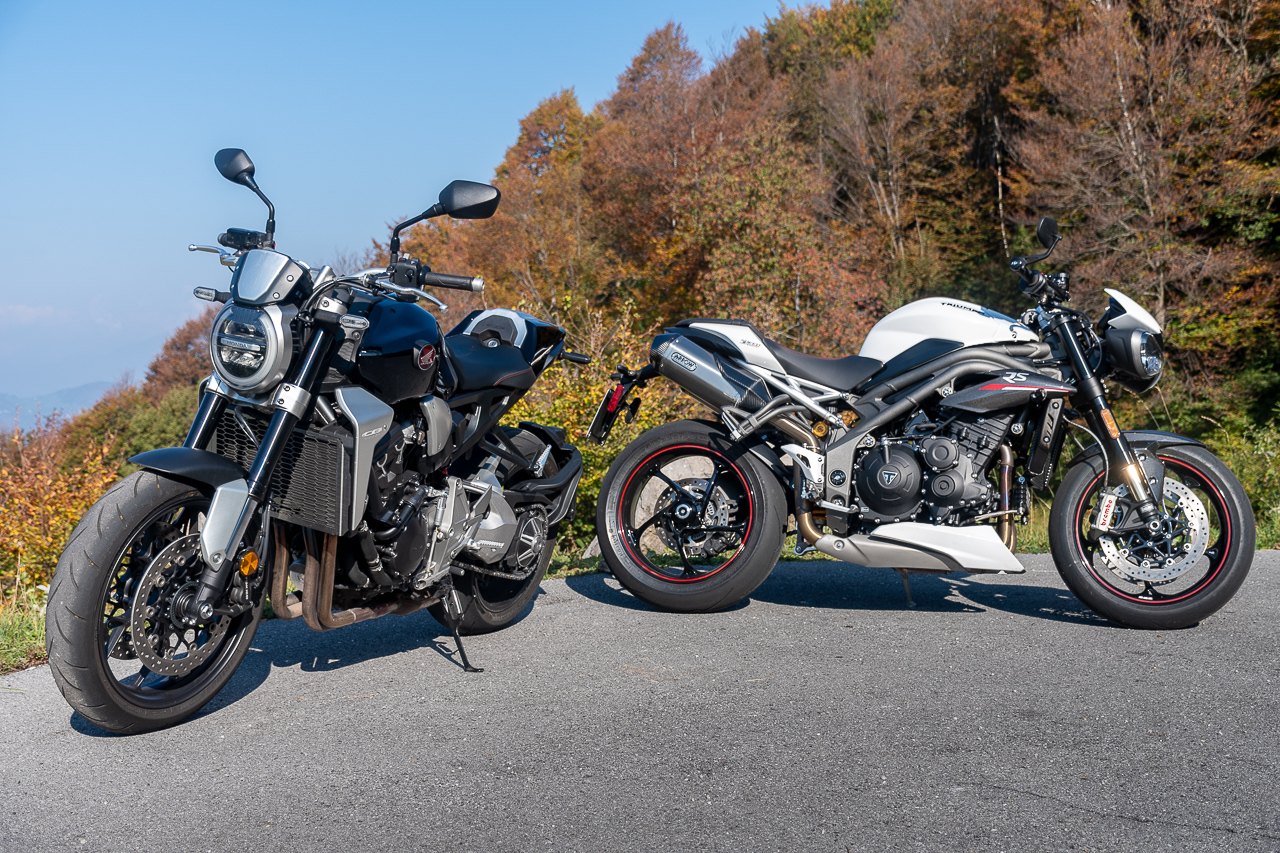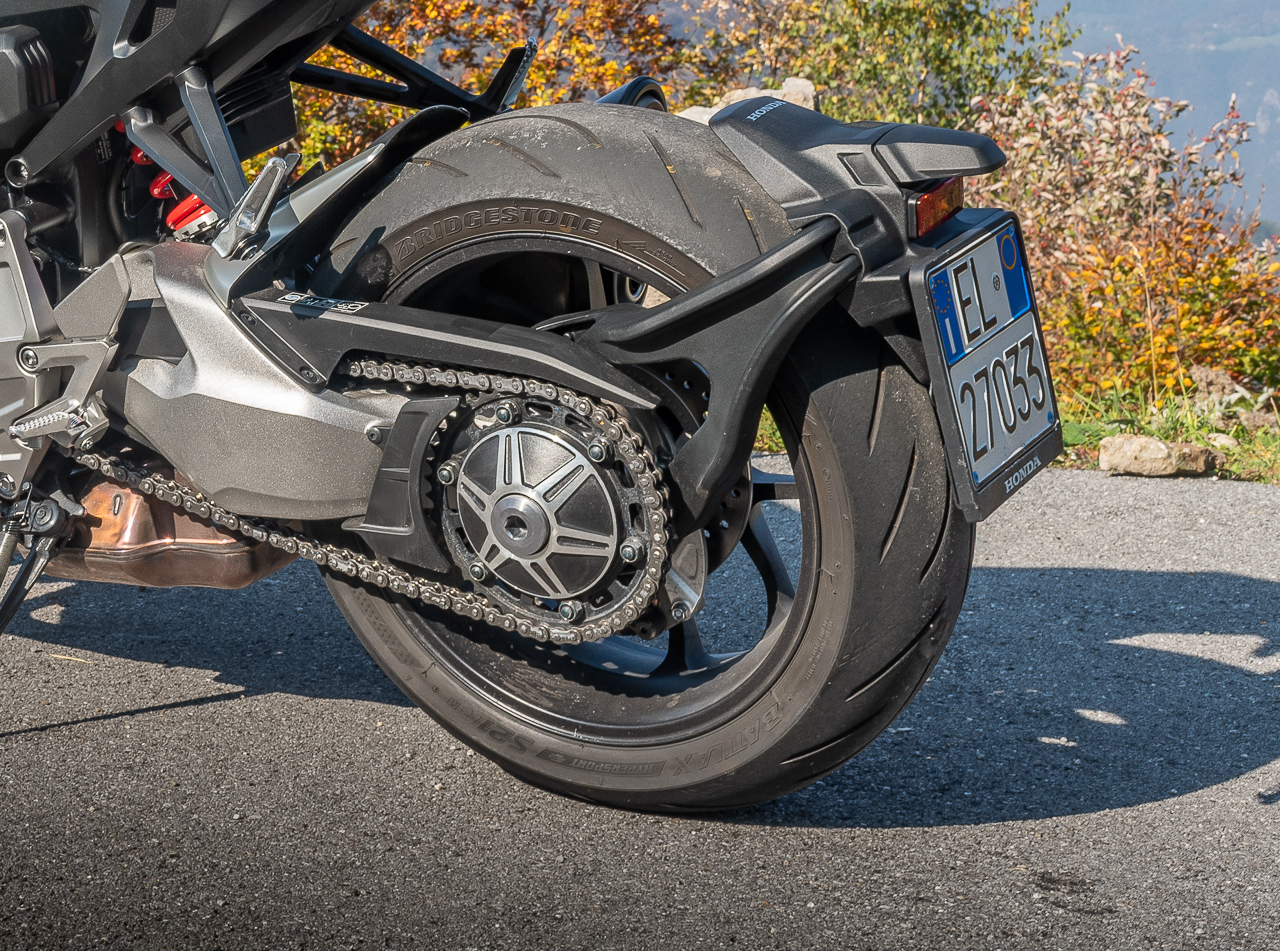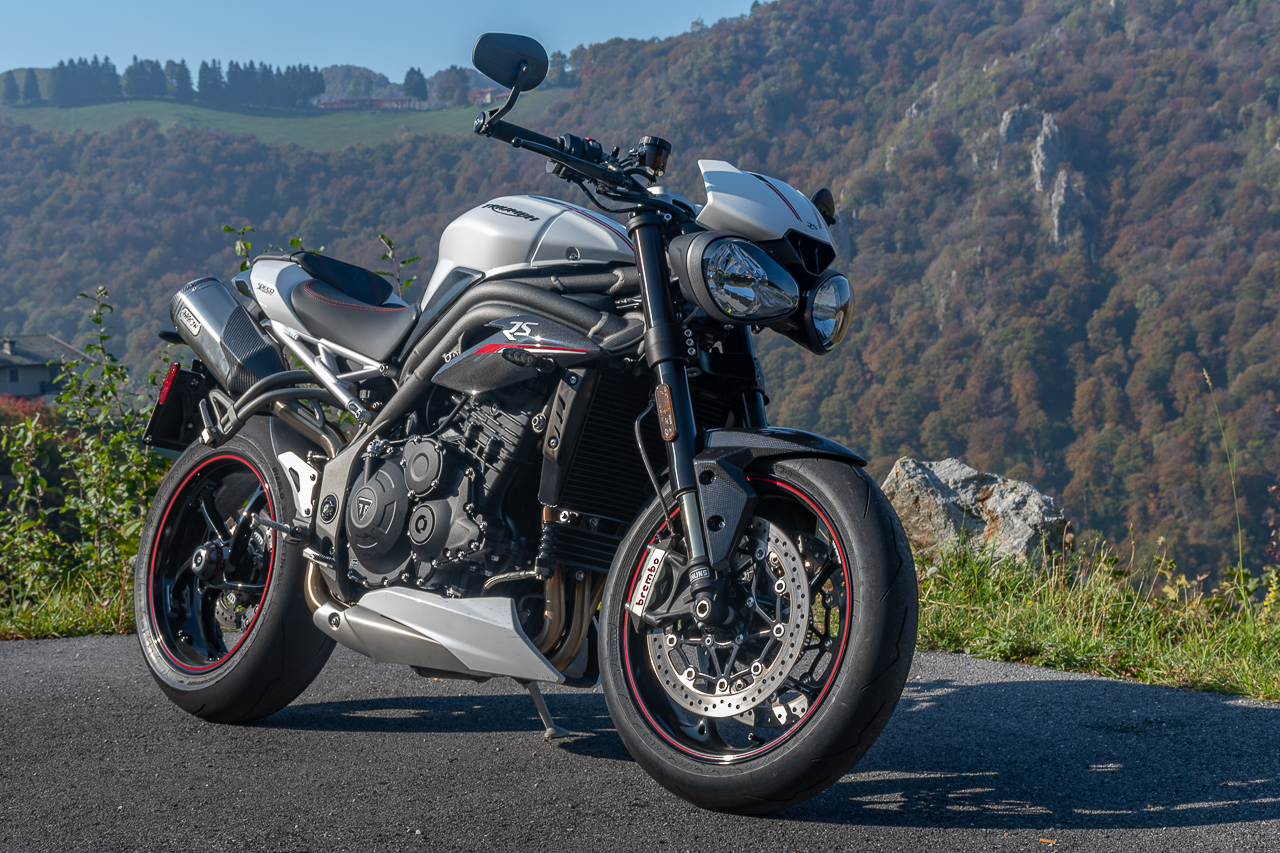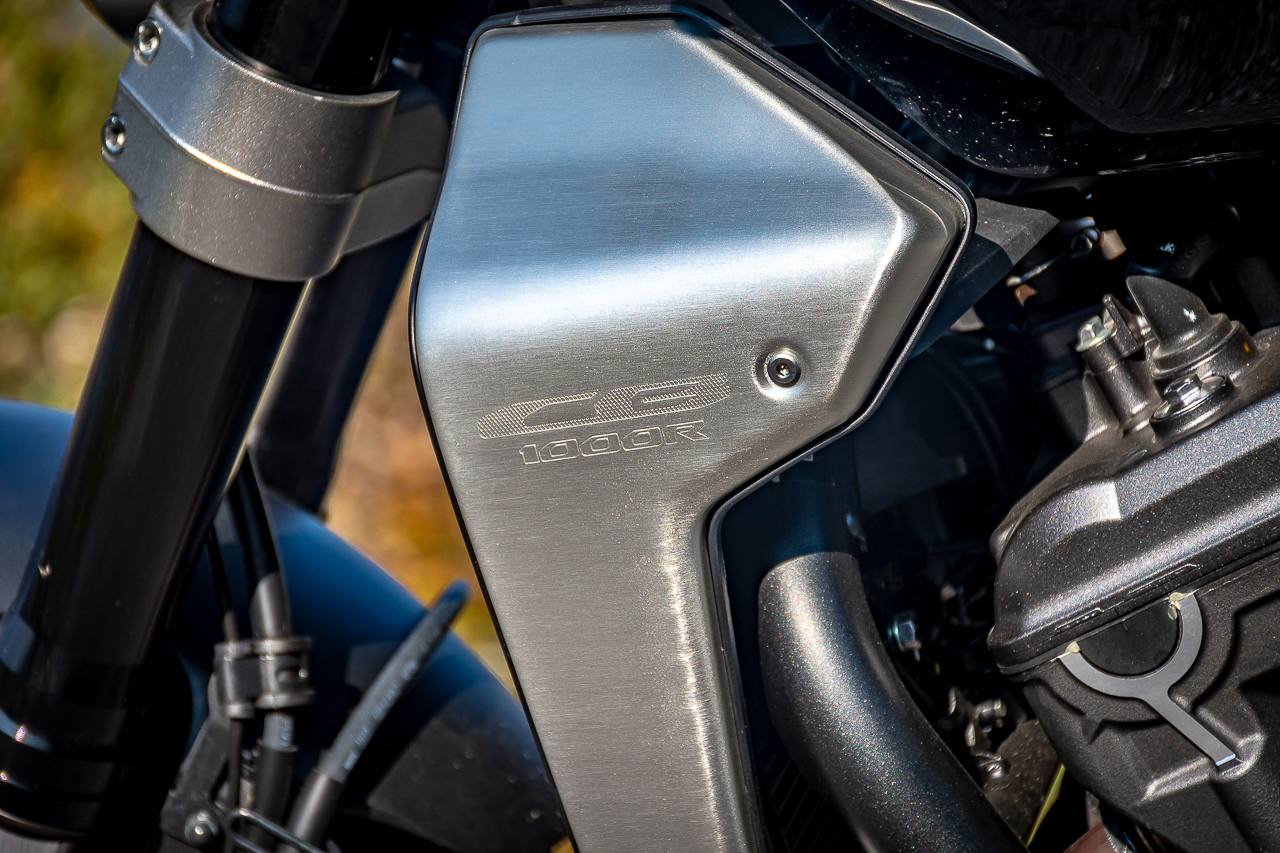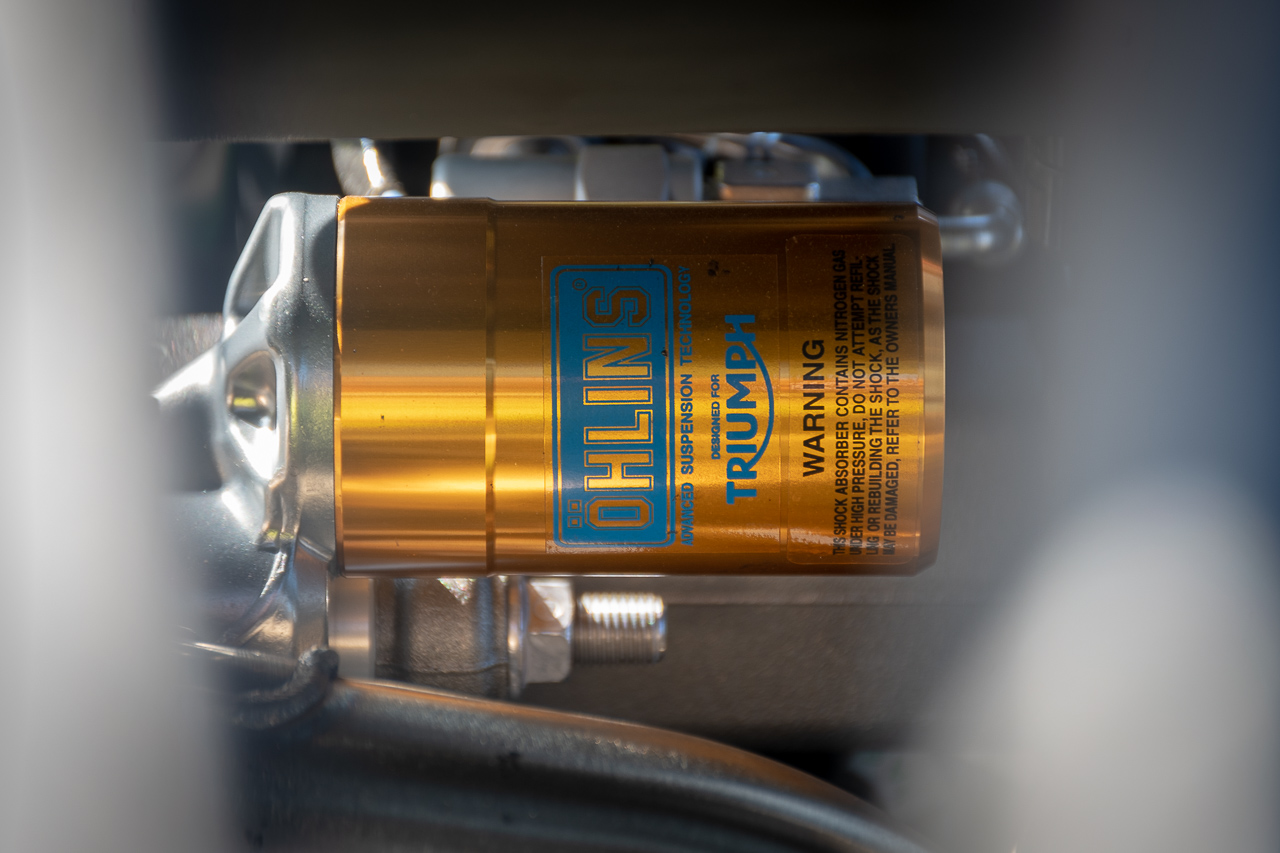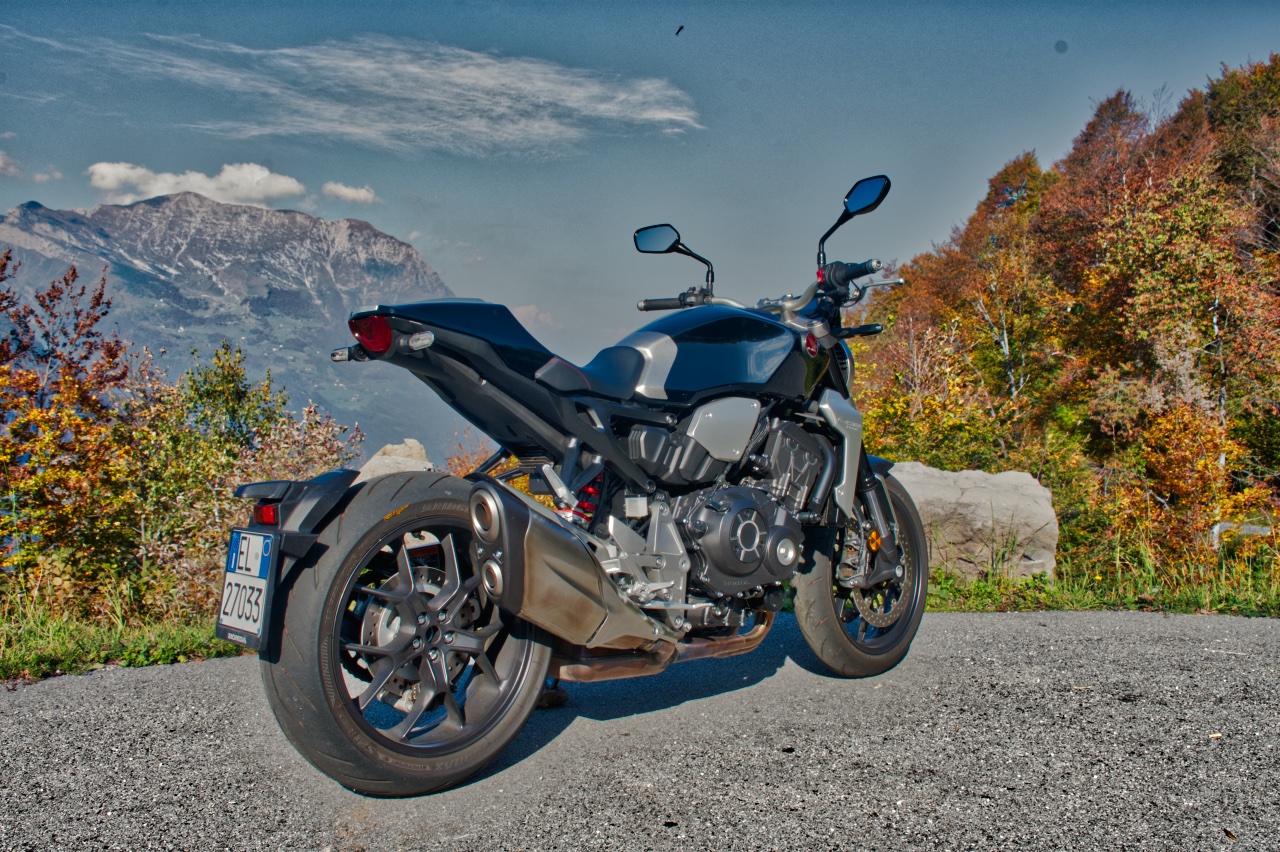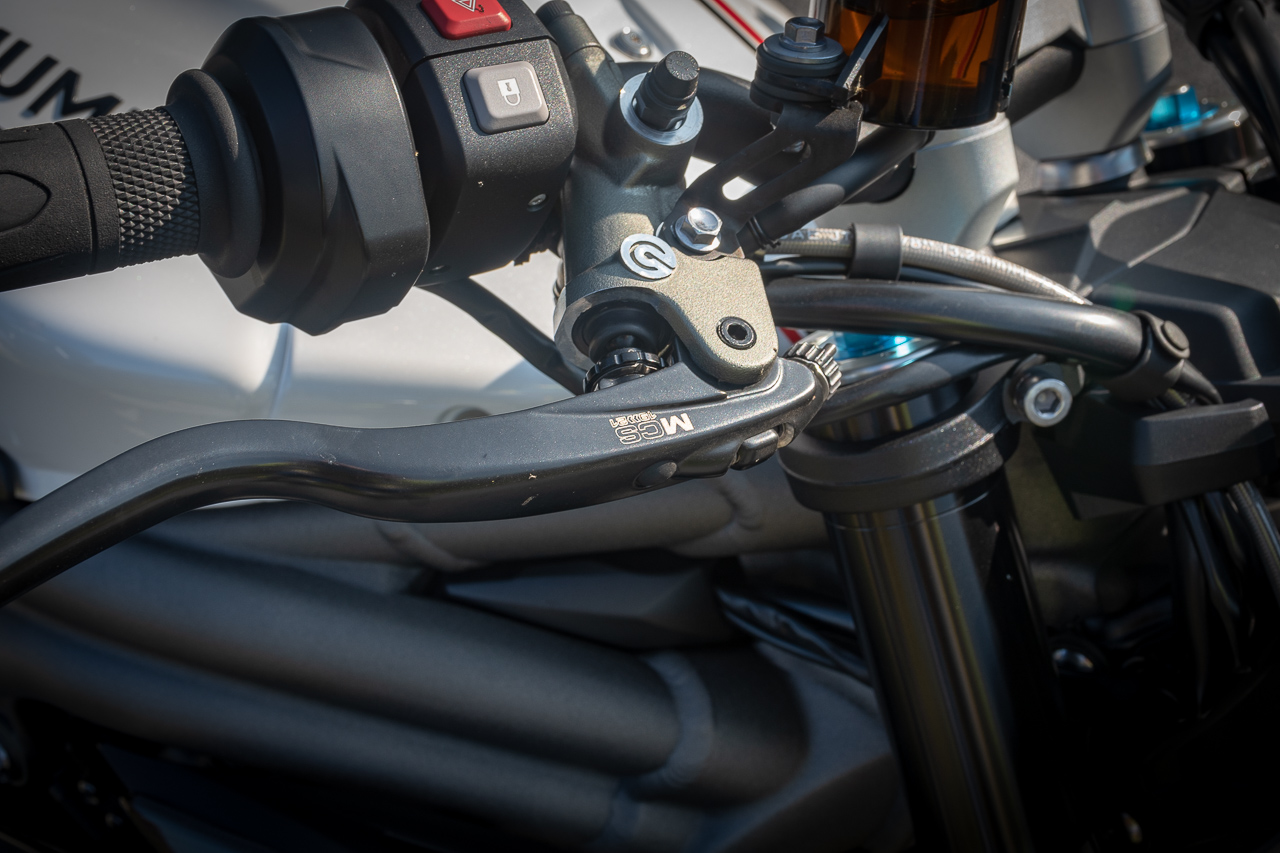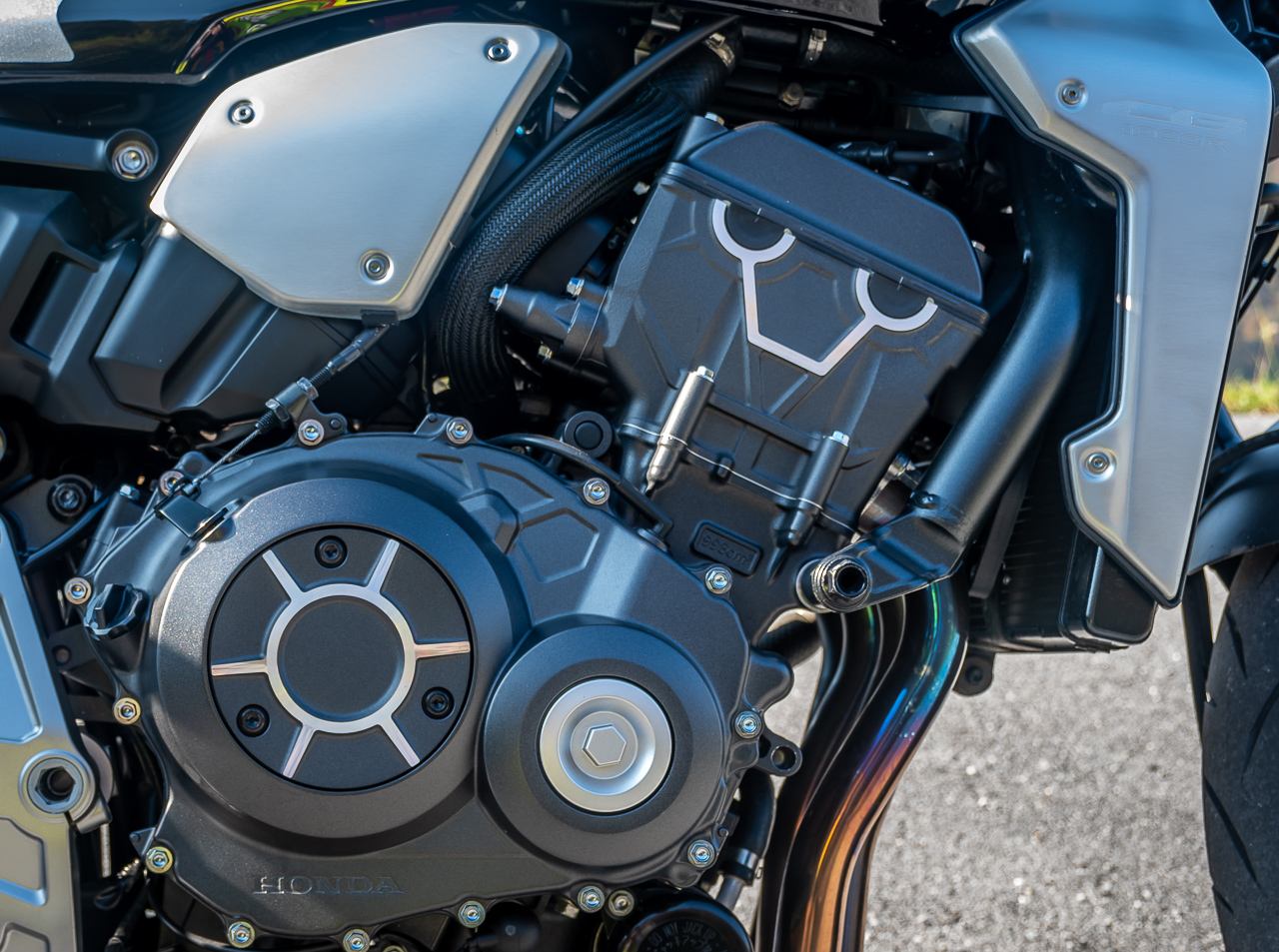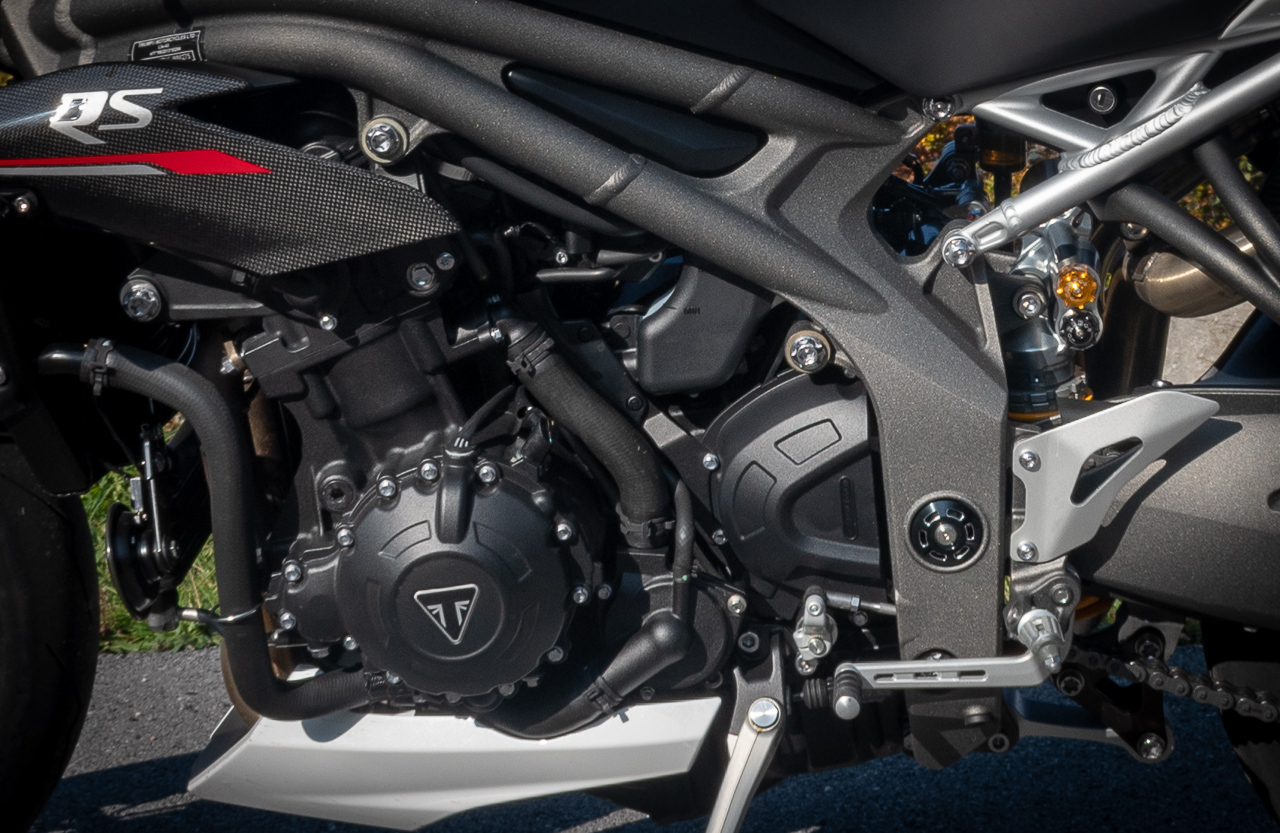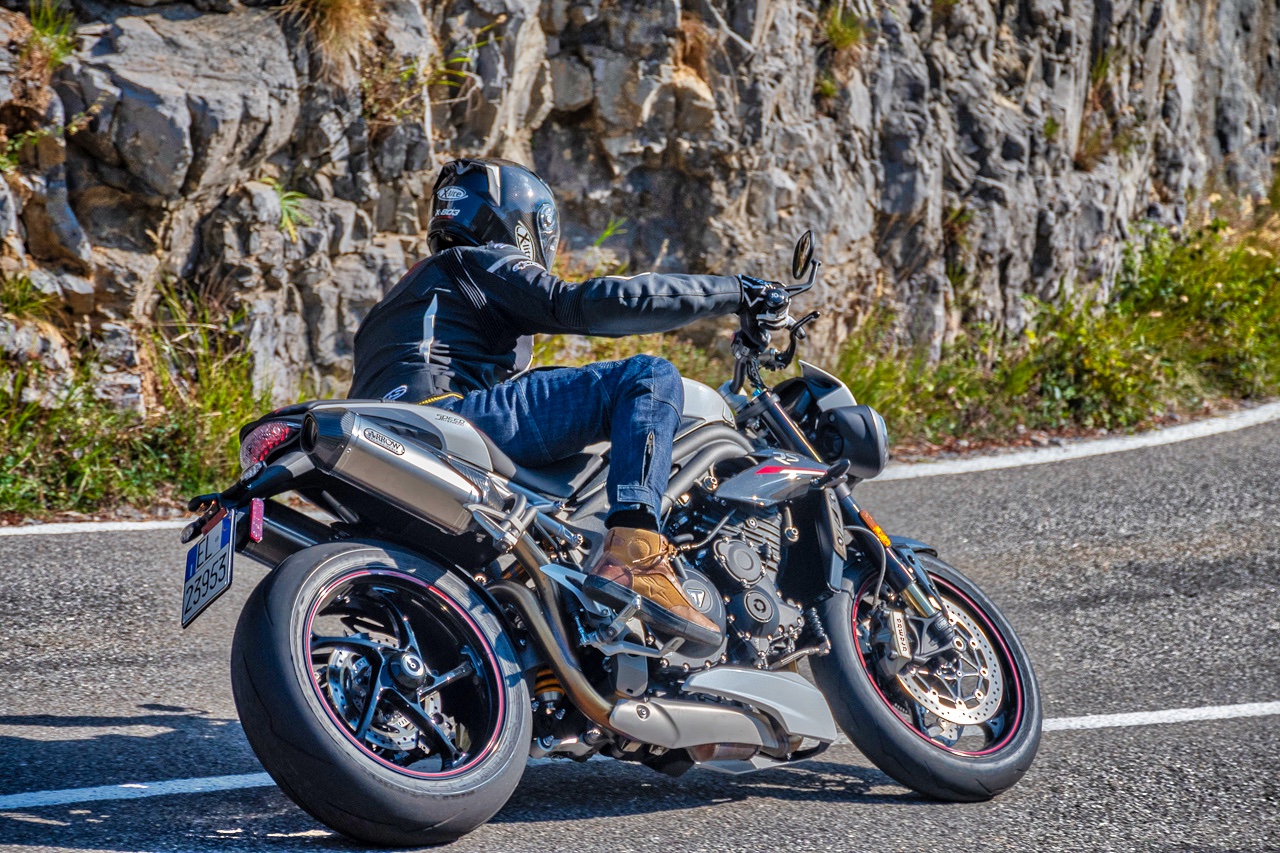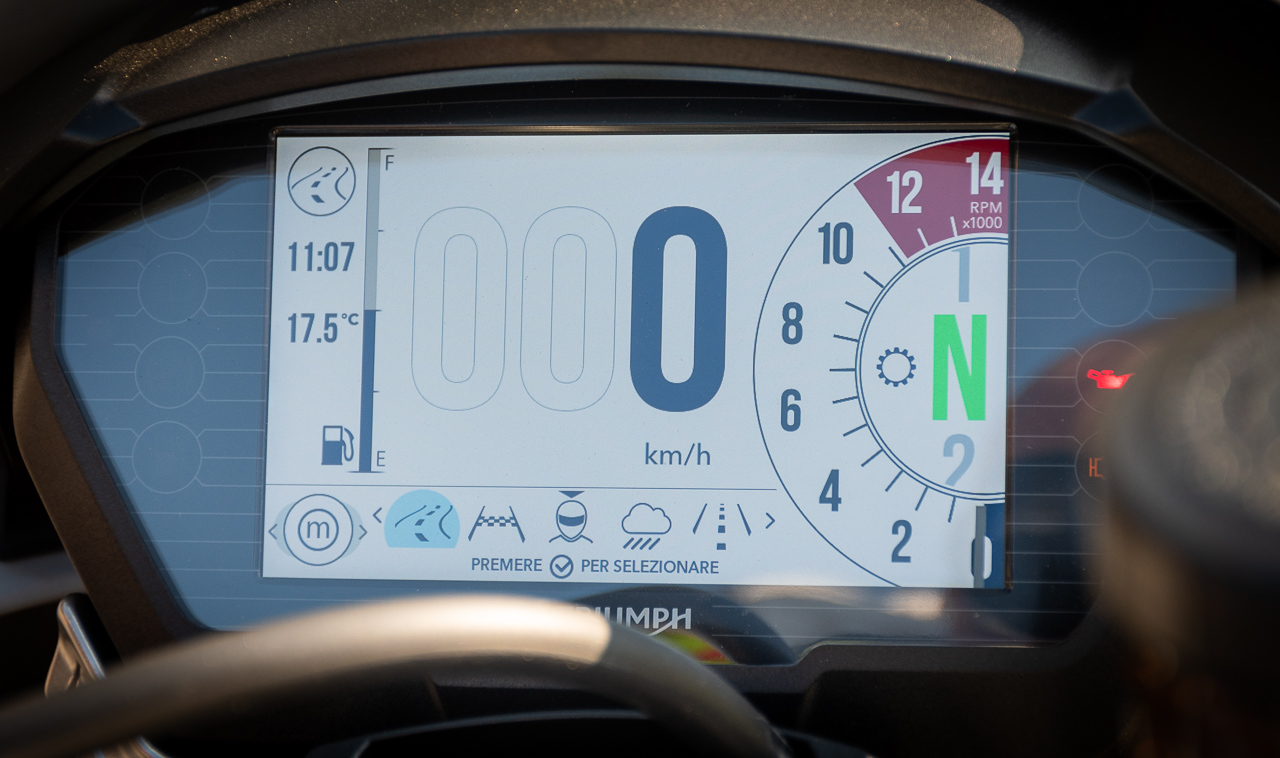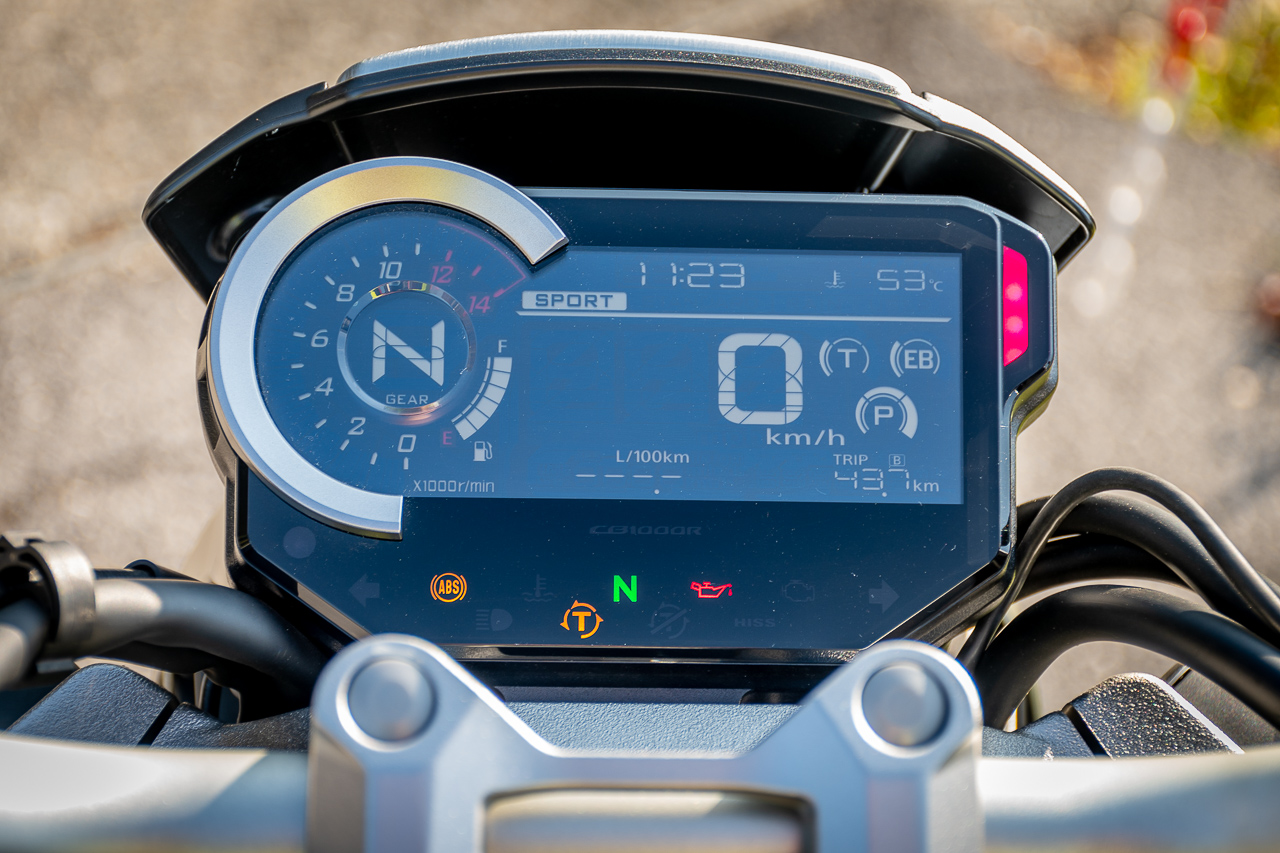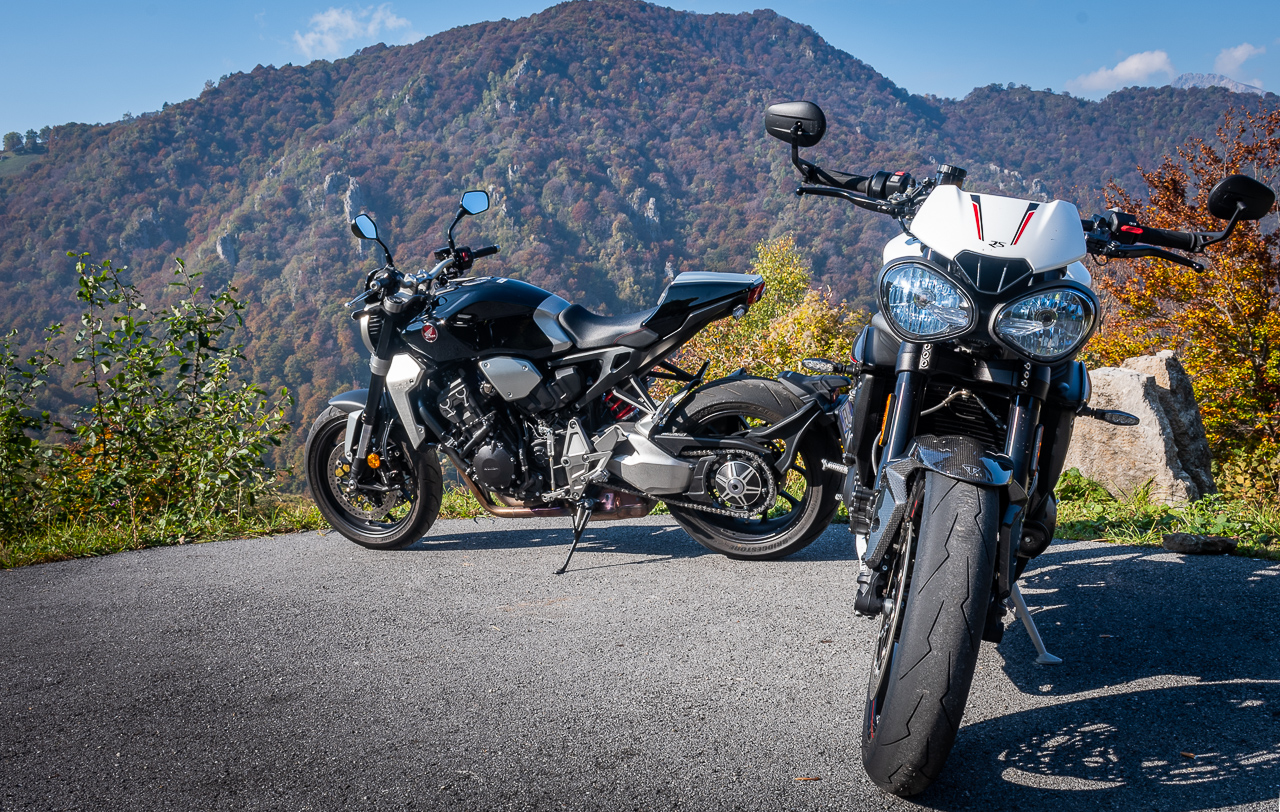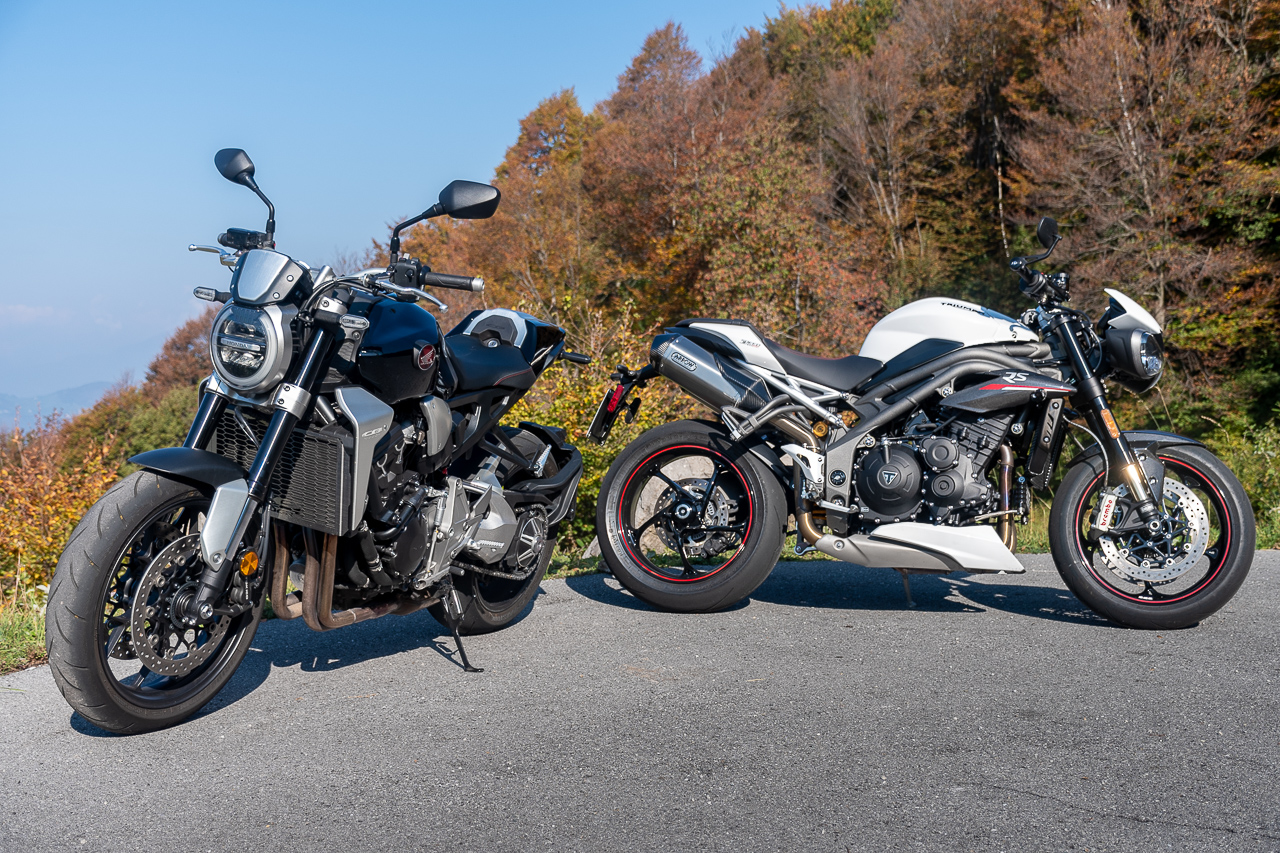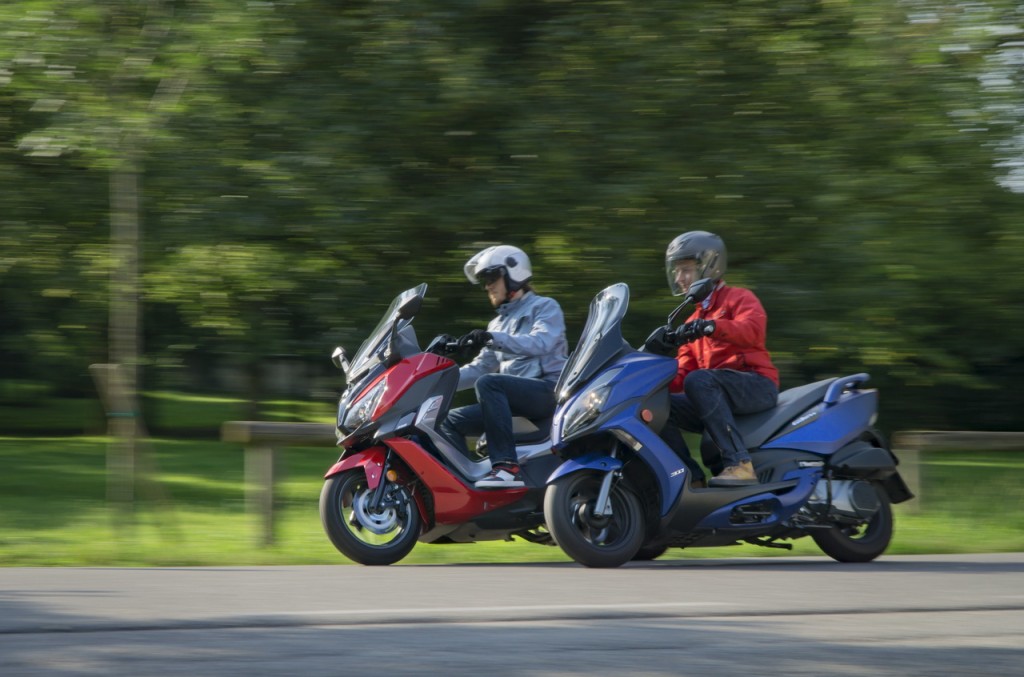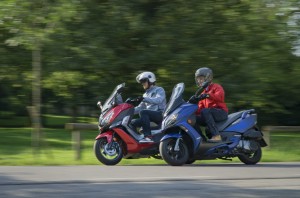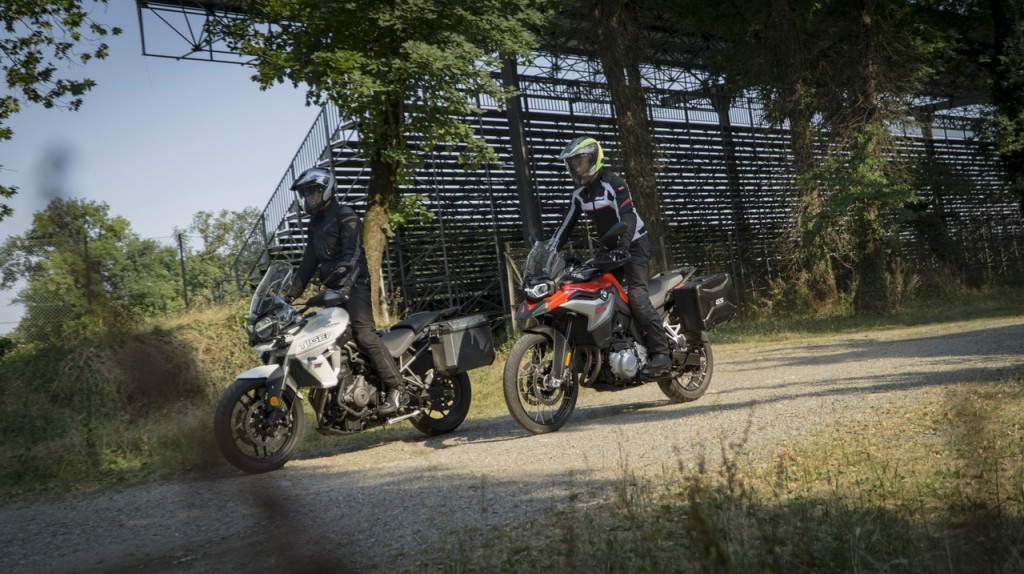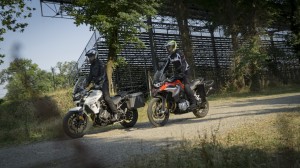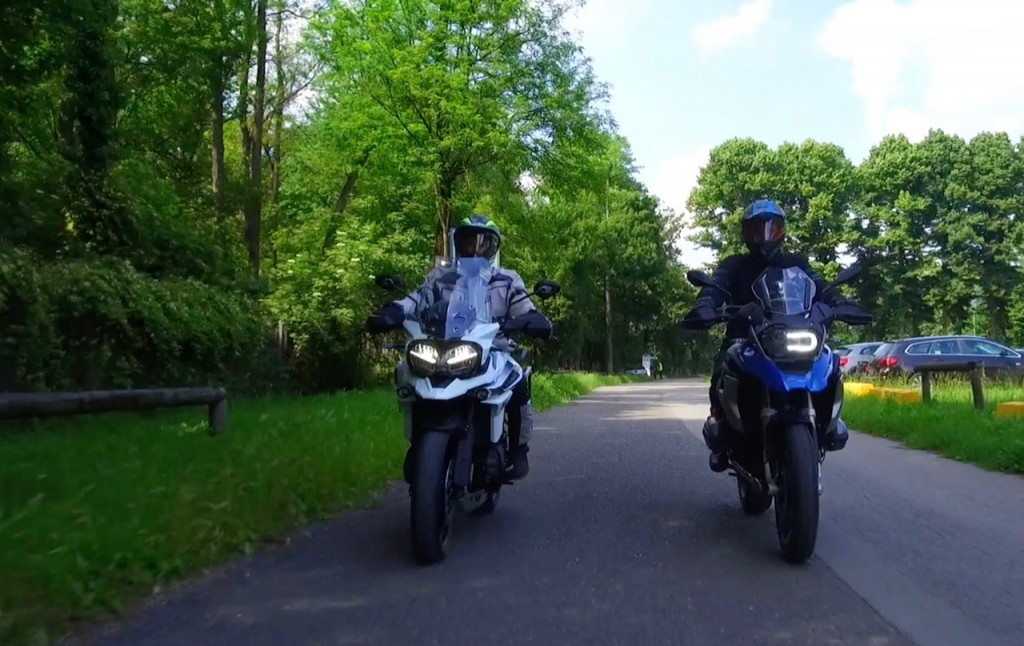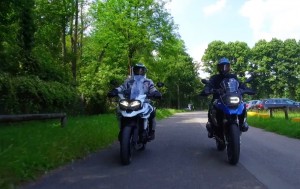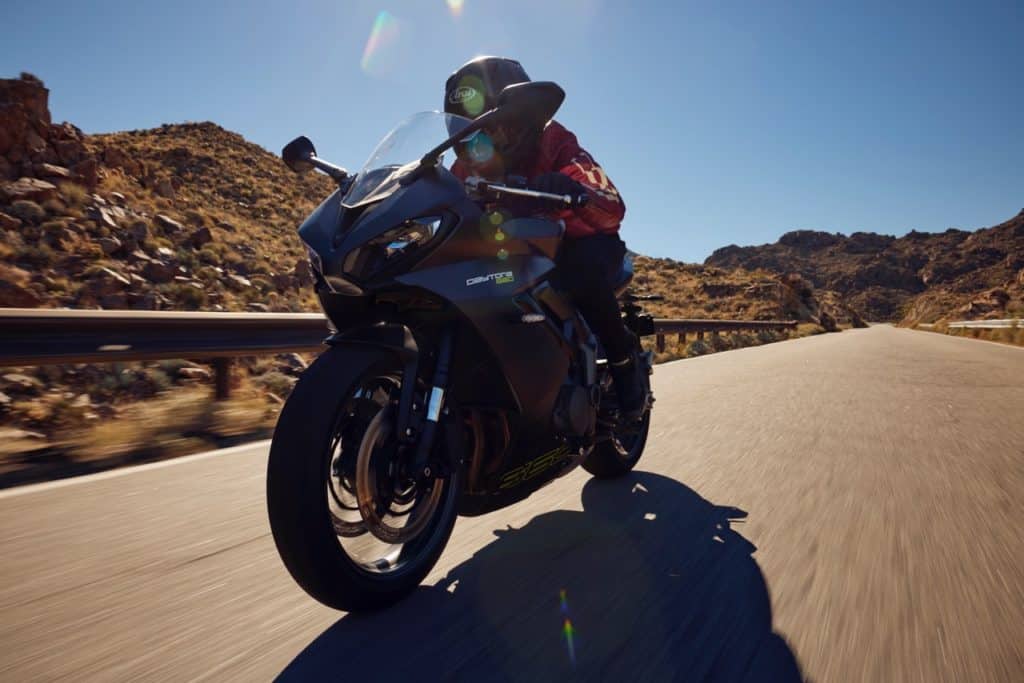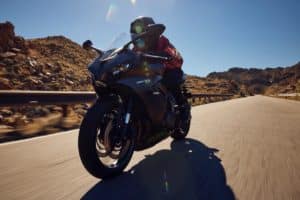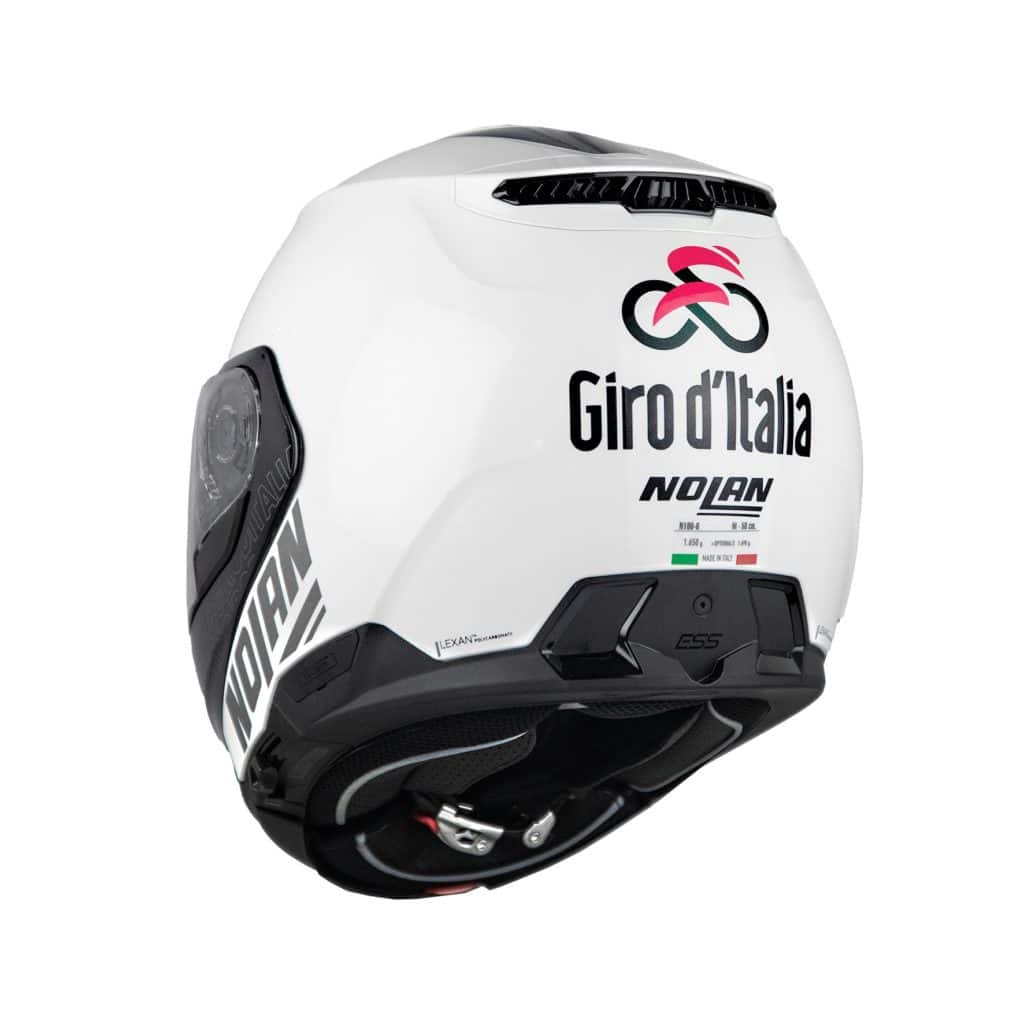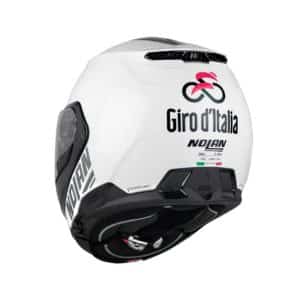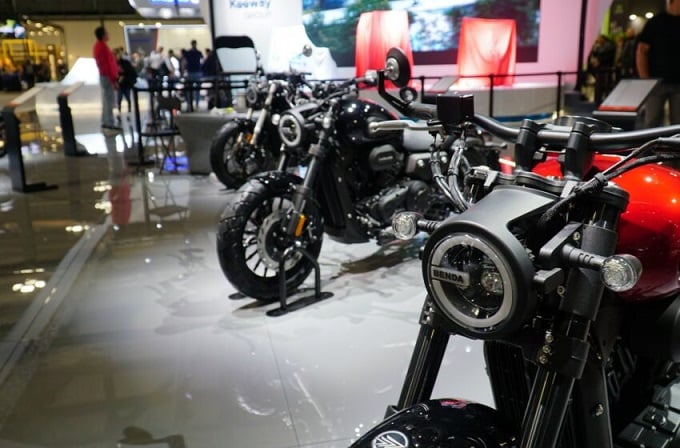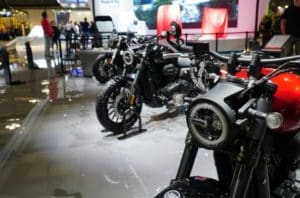Honda CB 1000 R+ and Triumph Speed Triple 1050 RS 2018: Two weights, two measures [COMPARATIVE ROAD TEST]
The brand new Japanese nude, progenitor of the Neo Sports Cafè style, meets the spearhead of the Hinckley house, back more fierce than before and with a great desire to show her worth
Honda CB1000R+ and Triumph Speed Triple 1050 RS – They are both naked, they have powerful three- and four-cylinder in-line engines, they are loaded with electronics but, at the same time, they interpret two completely different philosophies of thought. The beauty of driving these two engineering masterpieces lies precisely in their differences: technical data aside (we will analyze those too anyway), the purpose of our comparison is to identify the peculiarities and weak points of each of them. We will analyze every element of two profoundly different philosophies, which are behind these two projects, but if you just want to know our verdict, you can skip to the last paragraph of the article. Maybe then you will want to go back and read every detail of these magnificent naked sports cars.
If the Honda CB1000R+ represents an innovative project with which the Tokyo giant has decided to give a completely new model to fans of the category, the Triumph Speed Triple 1050RS, on the other hand, is a further refinement of a model known and appreciated by lovers of the three online and beyond. In a segment where everyone tries to dictate the law, Honda returns to the field with a different philosophy - faithful to the dictates of project leader Soya Uchida - which does not see performance alone and exclusively as the fulcrum of the new model but rather a complete overall view where the motorcycle, tailor-made for the rider, is a source of pleasure and driving satisfaction on a "total" level.
The Speed, on the other hand, remains faithful to its reputation as a hooligan naked, thanks to a less risky look but which, over the years, has managed to gain a large number of "loyalists" fascinated by those shapes that distinguish it from its competitors. Contrary to the concept developed by Honda, Stuart Wood, Chief Engineer of Triumph Motorcicles, openly declared that the changes made to the engine for the new Speed Triple 1050S and RS aim solely at an increase in performance by moving the limit of the zone even higher red.
The version being tested (top of the range exactly like the "plus" version by Honda) has technical and aesthetic features that raise the bar even further, giving the lucky buyers a package that deserves to be taken into consideration. It is enough to look at them together to understand that we are talking about two similar but different motorbikes, with different characteristics and methods of use that deserve to be analyzed in detail to understand "who does what better" compared to the other.
Stylistic avant-garde or tradition of forms?
It seems clear that Honda, having carte blanche and redesigning the model from scratch, has worked hard to conceive a new way of experiencing the motorbike. The CB1000R is breathtakingly beautiful, especially in this "plus" version with surrounding stylistic elements that further embellish its design. The minimalist line with an ultra-compact trapezoidal profile given to it by Japanese technicians represents today the maximum Honda evolution in the Cafè Racer field.
The CB1000R+ immediately takes the risk by showing the new license plate holder fixed to the short single-sided aluminum alloy swing arm, a solution that allows the rear to be lightened, enhancing its soft and never too tense shapes. Between his legs, the pilot holds a tank characterized by the lack of visible welding which gives the piece a truly graceful overall view. The bodywork parts are reduced to the bare minimum, so much so that a lower tip is missing but there is no need for it. The Neo Sport Cafè style, a concept so dear to Honda, is highlighted thanks to the profusion of metallic finishes in contrast with the glossy black: the radiator shrouds and the side panels are in burnished aluminum while on the engine crankcase, cylinder head and rear hub you can appreciate the machine work that draws geometric shapes on the powerful matt black in-line 4-cylinder engine. In addition we find the spectacular honeycomb aluminum radiator cover with model logo engraved in the sheet metal, a small front windshield with an aluminum insert, the passenger shell which makes it a single seater and a small rear mudguard with purely aesthetic functionality . The tail light with the characteristic crescent shape and the front light cluster use LED technology but what leaves you speechless is the obsessive attention to detail, a distinctive element of all those created under the Wing sign.
It's a shame that the starring moment of the splendid CB1000R+ is interrupted by the arrival of the Speed Triple 1050RS which immediately stands out with the two DRL headlights which are certainly of a less personal design but certainly effective. Looking at them in profile, you get the impression that the Honda is more harmonious while the Triumph is more angular, the same sensation you get when you get on the saddle. What is certain is that the Speed is loved precisely for how it was designed: the front mudguard is made of carbon as are the RS logo side panels and the bulkheads that protect the rhomboidal section Arrow terminals which integrate perfectly with the tapered shape of the tail . The Matt Aluminum rear subframe is a distinctive feature of the RS version only, while the beautiful aluminum rear-view mirrors installed on the sides of the handlebars offer almost perfect adjustments and viewing angles. Black rims with super shiny finish and 5-spoke design with rear nut cover machined from solid, complete the aesthetic features of the English supernaked. There is no point in trying to say that one is more beautiful than the other: they are two different design styles that leave the final choice up to the user. Honda is built with painstaking care, it is short and is also good for trotting around, letting all eyes fall on it due to the particularity of its lines. The Triumph is a massive hooligan that elbows its way into space, with a look that is popular but which perhaps - in some cases - needs to be subjected to stylistic modernisation.
Different equipment for equally different purposes
Honda is the bike you've always had. Triumph might be the one you want. It depends on each driver's driving style and what they want to achieve. RS for Triumph and "plus" for Honda represent the top of the respective brands' production in terms of naked bikes. But the differences are many and if it is true that the Neo Sports Cafè style is focused above all on aesthetic enrichments, the RS wording of the Hinckley manufacturer distinguishes a model that has as its objective the maximum in terms of performance: this is because it wants to rival the monsters category sacred better known as Aprilia Tuono V4, BMW S1000R, Ducati Monster 1200R. The Tokyo giant is not interested in direct confrontation because the CB1000R+ was created to enhance the rider's senses in any condition. It does not require "physical" driving, nor does it need to be pushed to the limit to provide emotions.
What is certain is that when speaking of technical equipment, the difference can be seen at a glance: the most striking one concerns the suspension department where Triumph includes a 30mm Öhlins NIX43 upside-down fork at the front while the rear features a splendid Öhlins mono TTX36 pressurized in nitrogen with separate tank, easily adjustable in compression and rebound and with hydraulic spring preload. Honda, on the other hand, relies on its usual partner by equipping its CB1000R+ with a Showa SFF-BP fork, i.e. Separate Function Fork - Big Piston, which concentrates preload adjustment in the left stem and compression and rebound adjustment in the right one. The convenience of acting on a single stem is priceless, it reduces the possibility of error to a minimum, guaranteeing uniformity of response. The rear mono from the same manufacturer, however, is only adjustable in extension on different load levels that can be set using the appropriate key. It is perhaps precisely by focusing on the suspensions that we understand how the two bikes are designed for different uses: the Öhlins are valuable elements that offer superior stability and sensations, but it is also true that you need to be able to get your hands on them at least a little . And in any case their battlefield is the circuit: try driving on cobblestones or on bumpy roads, then we'll talk about it again...
On the contrary, Honda has chosen a compromise suitable for everyone which allows you to ride the CB1000R+ without having to worry too much about the adjustments: on the saddle it absorbs bumps well and is well manageable even when the pace is forced. Only if it is driven to the limit does the front tend to bounce and the rear is unable to guarantee the support one would expect. On the contrary, Triumph is precise and sharp on the track or on well-paved roads but you also need to have a good amount of "hair on your stomach" to make the most of it.
And even when the time comes to grab the brakes we find ourselves faced with two different solutions but always balanced with the rest of the equipment chosen by both manufacturers: when it comes off aboard the Speed Triple 1050RS, the right hand applies pressure on the Brembo MCS master cylinder – acronym for Multiple Click System – with variable wheelbase that controls the four-piston Brembo M4.34 monobloc radial calipers capable of imparting a terrifying braking force on the generous 320mm discs. At the rear we find a 255mm single disc coupled to a more classic 2-piston Nissin caliper. On Honda, however, the 310mm floating discs at the front are bitten by Tokiko 4-piston radial calipers while, at the rear, we find a 265mm disc combined with its 2-piston caliper. They may not be the famous Brembos but the deceleration they are capable of imparting leaves one extremely satisfied when it comes to road use.
Three or four cylinders: power always available but different outputs
The crux of the matter is contained in the respective frames, double-spar aluminum for the English, upper single-spar steel for the Japanese: "three versus four", two different schools of thought capable of giving the maximum at every opening of the throttle. If from a technical and dynamic point of view the differences are noticeable thanks to Triumph's more daring choices, when the time comes to talk about how the two engines perform, we realize how the engines are respectively faithful to the "types" of motorbikes imagined by their designers. As stated at the beginning, the CB1000R+ is not intended to be a contender for the throne of the baddest naked of the year. She represents "the alternative", powered by a new strictly four-cylinder DOHC 998cc engine capable of delivering 145hp at 10.500 rpm and 104 Nm of torque at 8250 rpm. Compared to the previous engine, it gains 20hp but maintains its bore and stroke (75×56,5mm) with a compression ratio that goes from 10,4:1 to 11,6:1. The pistons are now forged rather than die-cast, just like on the Fireblade sports car currently on the market. Precisely taking the super sports car from the Ala manufacturer as a point of reference, it is worth underlining that, thanks to the reduction in gear ratios of around 4%, the CB1000R accelerates from 0 to 130 km/h in the first three gears more quickly than its big sister. keeled.
Hinckley responds by showing off the powerful 1050cc three-cylinder in-line engine, the subject of a further evolution aimed at optimizing performance as opposed to reducing weight. With 105 new completely redesigned components, the English engineers managed to increase power by a further 7% reaching the threshold of 150hp capable of delivering a peak torque of 117Nm (4% more than the previous version). The mass reduction involved the use of a new and lighter crankshaft, Nikasil-coated aluminum cylinder liners, a smaller starter motor as well as a lighter battery and alternator. Also new are the profiled pistons and the cylinder head with optimized exhaust openings which improve the flow of gases and offer an even higher compression ratio thus obtaining more power available to its driver. The magical sound of Hinckley's three-cylinder is amplified - exclusively on the RS version - by the pair of Arrow mufflers with carbon end caps which reproduce one of the most beautiful and particular soundtracks around.
Gas in hand, you find yourself straddling two different races which - despite only recording a 5hp difference in favor of the three-cylinder, 145 vs 150 - deliver a lot of power but each in its own way. The CB1000R+, thanks to the Thottle By Wire system, manages to offer maximum control of power delivery, thanks to the 4 selectable Riding Modes which allow every riding style to be satisfied. The in-line four delivers its torque peak in the range from 6 to 8000 rpm: here the thrust is felt and the bike climbs undaunted up to 11.500 rpm before the limiter intervenes. There are no holes or uncertainties, thanks to the Quickshifter quick change which works like a Swiss watch in both Upshift and Downshift. The English contender with its always abundant torque is more nervous and every rotation of the throttle corresponds to a furious acceleration that launches the bike forward without hesitation and, if you insist on revving it up, it is there and accompanies you until the limiter. With the traction control deactivated you will struggle to keep the front end glued to the asphalt, even in second gear. It's really a shame about the lack of electronic shifting which, on Triumph, is only available as an option.
The Honda exhaust system gives it a full sound but certainly not as sensational as that of the Triple which owes the best singing performance of the two to the Arrow couple. Considering a curb weight with full tank equal to 211kg for the Speed Triple 1050RS and 214kg for the CB1000R+, the performances are aligned except for the difference in the maximum speed where the Speed records 247km/h against the 227 of the CB1000R+ which however is self-limited. On the kilometer line from a standstill, the Englishman passed with half a second ahead of his Japanese competitor (21,2s against 21,6) and then reached the kilometer and a half finish line with almost 1 second of difference and a good 20km/h faster. more than speed. Both the in-line four and three are exciting engines, capable of making you go fast in total safety. What is certain is that the Speed Triple 1050RS allows you to also indulge in track-day whims while the CB1000R+ prefers roads, be they full of curves and hairpin bends or the simple home-office commute.
Technology at the service of the motorcyclist
We can have as many horsepower as possible and the most refined cycling sector ever but, if there aren't the elements to make sure that everything works properly, we risk finding ourselves in difficulty without even wanting to; this is why current motorbikes have electronic controls that are able to give us a hand when needed, making every riding experience unforgettable. The salient difference in electronic management between the Honda CB1000R+ and the Triumph Speed Triple 1050RS lies in the presence on the English of an advanced Inertial Measurement Unit (IMU – Inertial Measurement Unit) developed in collaboration with Continental and responsible for the constant monitoring of very important parameters such as roll, pitch, yaw, bank angle and acceleration; based on the data collected, it automatically adopts active security measures and adjusts itself accordingly to always guarantee maximum security and correct any errors.
Both bikes, however, have different types of maps to draw on through their respective instrument panels which, also in this case, see Triumph stand out over the Japanese with a fantastic 5" full-colour TFT display which makes it extremely easy to view and manage the multitude of information that can be drawn on. In the fixed section, the computer displays speedometer, tachometer, driving mode indicator, gear indicator, fuel level indicator, clock and ambient temperature. The other information is available in the lower bar of the screen and includes: partial km counter, average and instantaneous consumption, residual autonomy, selection of the type of map in use, information on maintenance and warning symbols. There is also a stopwatch for partial and lap times, to indicate the specificity of this particular top-of-the-range version. Closely linked to the Ride-By-Wire system, the available riding modes are Road, Rain, Sport, Rider and Track, the latter with ABS and Traction Control that can be completely deactivated. Honda's instrumentation is simpler, easily understandable but less refined in terms of technological choices implemented. Before the pilot's eyes everything needed is at hand. In fact, on the left block there are the main commands used to move within the menus. By pressing the MODE button, a horizontal line moves underlining the fields which become editable. In addition to all the classic information regarding partial and total travel, consumption, averages and so on, four Riding Modes are available (Rain, Standard, Sport, User). The difference between the maps is made by the different settings of the three key parameters that distinguish the profiles and which are: the level of power delivery (P), the intervention of the engine brake (EB) and the Honda Selectable Torque Control traction control (T) which, also in this case, can also be completely deactivated.
Cost, equipment and feeling. Which one to choose? Here is our (non) verdict
Who wins in the end? Who win? Which one is better? We cannot give a lapidary answer that closes in a few lines a comparison between titans such as the new Honda CB1000R+ and the Triumph Speed Triple 1050RS. Perhaps the only thing they have in common is that they both have two wheels and 1000cc motors, some a little more, some a little less. The final choice, however, will be up to the buyer who will want and will have to inform himself properly to understand whether to spend €15090 FC for the Honda or €16300 FC for the Triumph (to which we strongly recommend adding the Triumph Shift Assist electronic gearbox which costs €367). € installation separately). Motorcycles like this cannot be chosen solely and exclusively for the packages they offer: they should be tested to understand if they meet the parameters you are looking for. With the CB1000R+ you take home an instrument with perfect altitudes, ideal for not too tall riders who love spending hours and hours astride their motorbike. Everything is right where it should be and the four user-selectable Riding Modes allow riding even for non-expert people. In daily use it is simply fantastic and allows you to move even in very busy cities with embarrassing ease, also thanks to the steering radius. The suspensions absorb every bump and the almost electric engine is manageable and always ready to rev. Leaving the city and approaching extra-urban roads, the CB changes with the changing landscape. It will enchant you with its simplicity and will allow you to go well beyond the limit without even realizing it; and if you know how to shift at the right time, thanks to the fantastic Quickshifter, you can almost forget about the clutch lever. Honda has hit the mark once again and Mr Soya Uchida's wishes have been fully respected: the motorbike that places the rider at the center of its cosmos, making him feel like a leading actor.
She contrasts the Japanese girl with almond-shaped eyes, the hooligan disguised as a two-wheeler. The aesthetics are not as futuristic as that of the CB1000R+ but the contents are class-leading. With its 1050RS, Triumph has put together a superlative object which however forces some compromises; Generous in size, it accommodates riders over 85 meters in height without any problems but requires more "physical" riding. It costs more than Honda but offers some solutions to take into consideration if you plan to frequent the circuits at least a few times a year or if you have a nature that is at least 70% geek and 30% polite person! Leaving aside the carbon fiber details and other finishes with more aesthetic purposes than anything else, we cannot help but remember, once again, that the Speed boasts first-rate accessories such as the MCS by Brembo pump combined with the powerful calipers M4.34 monobloc radials, a coordinated clutch, the Arrow silencers with titanium body and carbon final as well as the famous pair of shock absorbers consisting of a NIX30 fork and TTX36 mono by Öhlins; the ignition is keyless and the comfort saddle is something extraordinary. You will agree with us, however, that this type of equipment is especially suitable for extreme use which is certainly not suitable on roads open to normal traffic. In support of this line of thought there are also the specific Pirelli Diablo Supercorsa tires which are more at ease on the track than on the road, where they allow lean angles to shave off the footpegs. The forward-loaded driving position and the more open steering angle compared to the Honda make it challenging when maneuvering in the city, just like the suspensions which do not want to absorb bumps, clearly communicating every roughness of the road surface.
The choice of motorbike usually starts from the heart, which is why each of you will decide which of the two will come out the winner, then keeping it in your garage.
We remind you that you can find the two single tests on our pages, for the Honda CB1000R+ and for Triumph Speed Triple 1050 RS.
if you want to always be updated on our news
Follow us here

